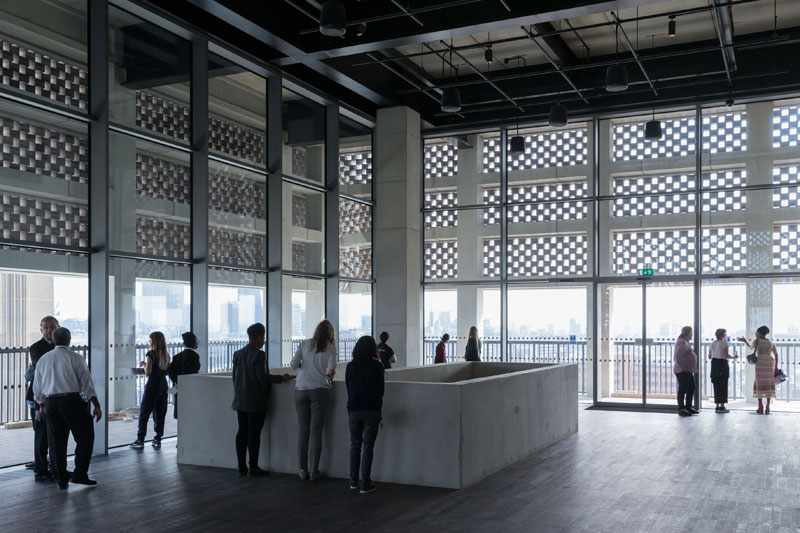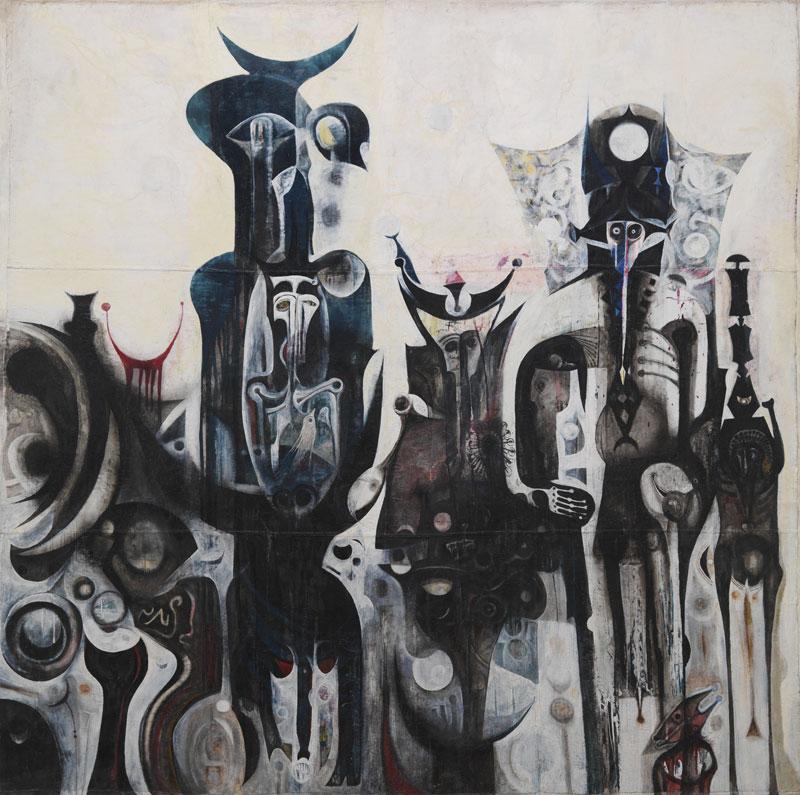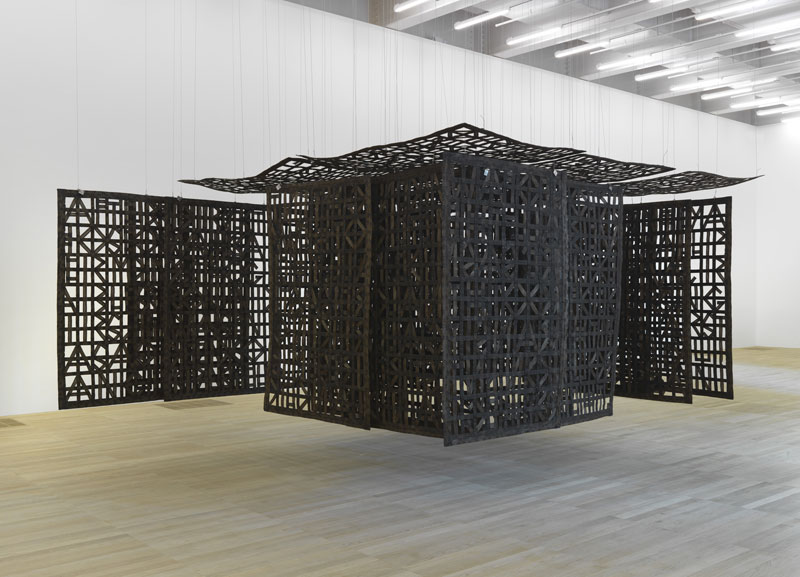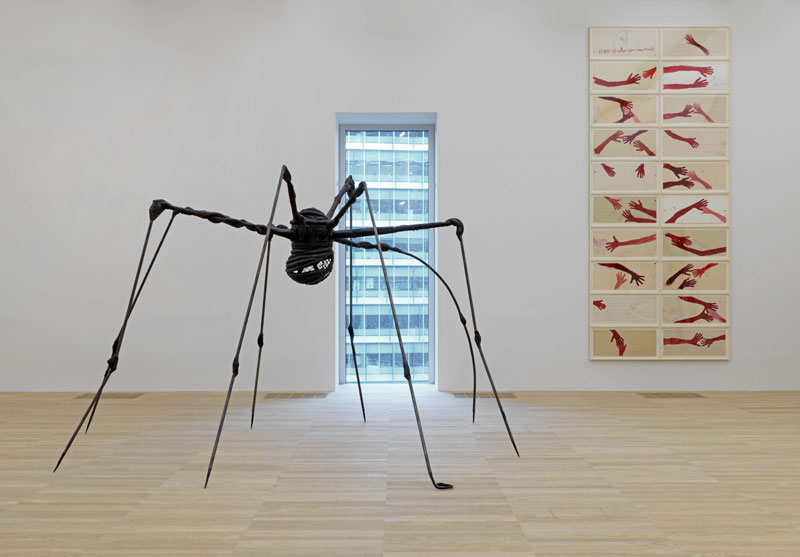Frances Morris, director of Tate Modern, spoke to Apollo on the eve of the opening of the museum’s new annexe, the Switch House
How does it feel to be the new director of Tate Modern just as the new building is about to open?
It feels good, of course it feels good, as I have been very much part of Tate for a long time. But everything has always been a little bit of a push; it is a complicated organisation, and it’s taken a lot of advocacy internally, to create the Acquisitions Committees and all that over the years. What’s nice is that as a director, the initial struggle to get heard isn’t there. This brings its own challenges, but in a strangely wonderful way it has been less stressful. I was the iceberg under the surface before; I felt frustrated over the last few years not having the straightforward possibility, after acquiring work for the collection, of putting it out there on display. Now it is wonderful to join the dots.
Switch House, Tate Modern. Photo © Iwan Baan

Tate’s efforts to make acquisitions from underrepresented areas have been well publicised – but until now it’s fair to say visitors were left wondering where all this new work had gone…
Exactly. It feels like a different collection: the work has been there for a while but now we can reveal it – in publications, in postcards and also within the exhibition programme.
How does the new building feel to you?
A total relief! For many years I have seen it on a plan, then in construction. Now I feel relieved at how great the new galleries are, and how flexible. They suit the art we put into them. It is always difficult to install art for the first time in new spaces – you never know how they will look – but the installations here have felt comfortable. We’ve done a pretty good job with the first installation, but we can do a very good job moving forward.
Switch House, Tate Modern. Photo © Iwan Baan

Will you keep changing the exhibition displays?
Yes. We wanted to do two things when we opened the new building. First, we wanted to justify the extension: we wanted to show works we were unable to show before, or which we acquired since 2000 – new and different types of art. The other thing was to create a particular narrative in the new building, and to give a concrete account of why the basement provides a unique space for time-based media and performance.
How did you decide what to put where?
By the time we started thinking about the Switch House we already had four narratives in place [in the old building]. All run from 1900 to the present day; four journeys through the history of art. We are still not going with chronology, but there is a sense of unfolding in time. In the new building we shrunk the time frame, so we have work from the 1960s to the present day, while the old building houses all the old, great works from 1900 onwards.
Installation view of Modern Times. Photo courtesy Tate Photography

So you would dismiss the criticism that Tate forgets about history in its attempts to be popular?
I would like to think that the display makes a bold case for the importance of original research and scholarship to drive a re-understanding of art history. It is a compelling case in some of the galleries that Paris and New York were not the centre of the universe in 1950s. In the aftermath of the Second World War, nuclear conflict and the Holocaust, artists in many parts of the world were all interrogating the idea of what it meant to be human.
So how do you think visitors will react to this new hang?
Well, I think the visitor will be provoked, and I think they will be charmed – some of the work is incredibly beautiful and compelling. I would like to think that by placing work with which people will be unfamiliar – for example that of [Ibrahim] El-Salahi – in the context of Jackson Pollock and Karel Appel, people will see that his art equals theirs in stature and merit. It is an exciting discovery for curators and I hope we can convey that excitement to the public.
Reborn Sounds of Childhood Dreams 1 (1961–65), Ibrahim El-Salahi. © Ibrahim El-Salahi

In the new building, can visitors make their own journey or is there a specific route?
The idea is that you make your own journey: it is not prescriptive, and there is also a little bit of humour there too. There are one or two works of art that people may think are part of the architecture, and that’s fine. One of the great characteristics of art in the second half of the 20th century is this blurring of art and life. One of the big questions is why is this art? If we can encourage even a small number of people to be open to that question then great, because it is a really enriching one.
The outside of the Switch House is quite hermetic; does it make people feel welcome?
One of the lovely things about the building is the entrance from the south. You can walk straight to the Turbine Hall: you are propelled right into the heart. The building is remarkably fluid inside. What I like about it is that it defies the clichés that go with a power station. A lot of new museum buildings look like shopping centres and have a generic feel to them: this is just completely different. It says a lot about the type of institution we are – contemporary architecture with heritage, reinventing it, making it feel coherent. I think it is brilliant.
Pavilion Suspended in a Room I (2005), Cristina Iglesias. © Cristina Iglesias

If Tate is not trying to be a cathedral for art, what other term would you use?
A colleague of mine once described Tate as a university with a shop attached to it. I think it is more like a university with a playground attached to it. There is this deep scholarship but there is also a touch of lightness and play: they go hand in hand. If diverse audiences have a playful encounter with art that doesn’t make them feel stupid, then they feel that this is a place made for them. As you grow older, you can push it further and transition more toward the scholarly side.
Could you tell us more about the women in the collection displays?
Ah, the women. It is important to me, and not just for the sake of it. We need to look at the overlooked – at careers and contributions that were different and had to be different as they were made at the margins. I count women in this. Many galleries in the Switch House are dedicated to single artists, and because of the deficit of women in the historic collection we have made a particular effort to privilege great work by women. This includes someone like Louise Nevelson: we own two of her works but they have never been shown before. The problem is many of these women are not well known, and most audiences feel comfortable with artists that they are familiar with. In a way there is something of a mission to show them, to make them more familiar, and in 40 years time they might become the blockbusters.
Installation view of Artist Rooms: Louise Bourgeois. Photo courtesy Tate Photography; © The Easton Foundation




